| Home | Nature Weekly Index |
17 March 2019 | Potted Weedy Plants |
My last weekly note was written about 9 months back in July 2018. In the whole of 2018, I only managed to upload 7 pieces of weekly notes. Since 2017, my time allocated to this website had been getting lesser over time. Over the last one year, I had hardly update anything. I am hoping to get back to this trade again soon.
Let me begin this new episode with the unknown Dioscorea species that I shared in July 2018. Its identity is still unknown except that both of the bulbils had started to germinate in the pot late last year which came as a surprise. One of the plant even had a new tuber grown from its base. I thought both bulbils were just going to rot away in the pot. I had trimmed them slightly when I went overseas for 2 weeks in February since no one was around to water them. Both survive the short "drought" during this period. I hope to see it bear some bulbils this year. It will be a bonus if they could also bear flowers eventually.
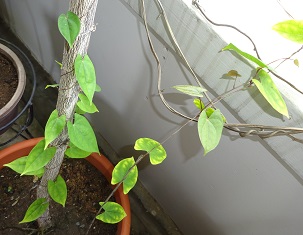
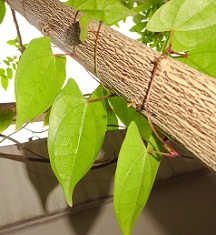
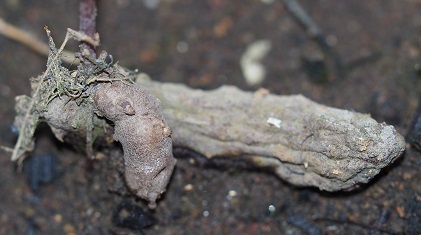
One wild weedy plant that I was trying to continue keeping in my pot was
Solanum americanum (Black Nightshade).
I got a healthy fruiting plant last year but had to trim it when I was away recently. It is now infested with
white flies which is a common pest among my potted
plant community. Some plants were more prone to its invasion.
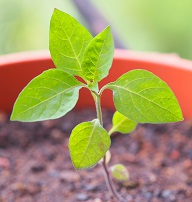 The plant is expected to succumb to its invaders as soon as a threshold population of the white flies was
reached on the plant. The trick is to detect the invasion early and get rid of in the early stage by spraying
water on the underside of the leaves. A new plant had recently germinated spontaneously in another pot. I intend
to nurture it to a fruiting adult.
The plant is expected to succumb to its invaders as soon as a threshold population of the white flies was
reached on the plant. The trick is to detect the invasion early and get rid of in the early stage by spraying
water on the underside of the leaves. A new plant had recently germinated spontaneously in another pot. I intend
to nurture it to a fruiting adult.
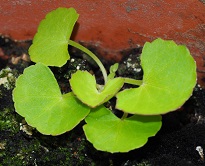 Another weedy plant that I had intentionally kept was a creeper,
Centella asiatica (Indian Pennywort). I had grown a
matured fruiting plant in a small pot in July 2017
that allowed me to take some good close-up pictures of its tiny flowers and fruits. That plant was gone now.
However, I found 2 young plants in a pot recently. To keep them thriving, I had removed the wildly spreading
Fatoua pilosa (Hairy Crabweed) in the same pot.
The Hairy Crabweed that I brought back in June 2015
had done exceptionally well and had spread to most pots due to the dispersal mechanism of its seeds.
Another weedy plant that I had intentionally kept was a creeper,
Centella asiatica (Indian Pennywort). I had grown a
matured fruiting plant in a small pot in July 2017
that allowed me to take some good close-up pictures of its tiny flowers and fruits. That plant was gone now.
However, I found 2 young plants in a pot recently. To keep them thriving, I had removed the wildly spreading
Fatoua pilosa (Hairy Crabweed) in the same pot.
The Hairy Crabweed that I brought back in June 2015
had done exceptionally well and had spread to most pots due to the dispersal mechanism of its seeds.
It is kind of fun to observe the changes of these weedy plants in my pots when I was not able to venture far to the wild places. They served as another means for me to observe the ever changing and resilient of nature.